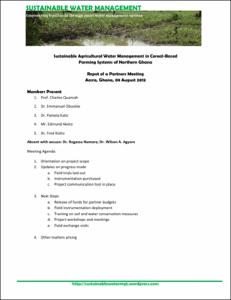State of Climate Change Adaptation and Mitigation Efforts for Agriculture in Bhutan
Bhutan is least developed, mountainous and landlocked country in the eastern Himalayan range with a population of over 600,000. However its population and ecosystems are vulnerable to climate change. Despite a high level of environmental protection and awareness, Bhutan has become a victim of the global impacts of climate change caused by emissions in other countries. There is little historical climate data available in Bhutan; current records date back only to 1994. Consequently, the future climate scenario for Bhutan is uncertain.










